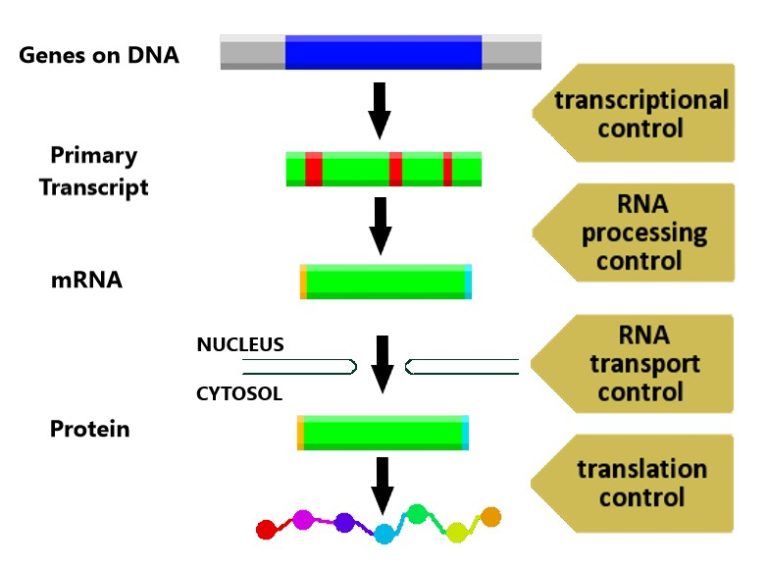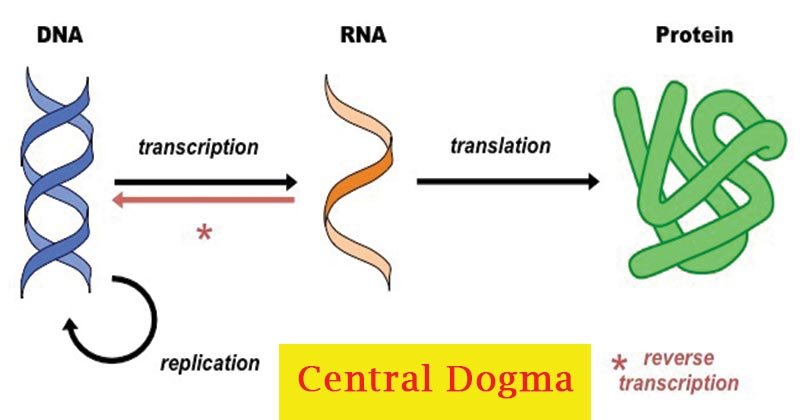CBSE Class 12 Biology Chapter 6 Revision Notes Part 3
Chapter 6: Molecular Basis of Inheritance Revision Notes Part 1
The Molecular Basis of Inheritance is an interesting topic of study for avid science students. It unravels the mystery and science behind how genetic features and traits are passed on from parents to progeny. The study also helps understand the key aspects of the molecular basis and how they influence and determine the molecular processes.
Regulation of Gene Expression
Gene Expression is a process through which genetic codes are used to manage proteins synthesis, which is required for a human body to produce the cell structures. Structural genes carry information required for the sequences of amino acids. This process has two main steps: transcription and translation.
Gene Expression Regulation is the process by which the instructions present in our DNA are converted into a functional product, such as a protein, and it allows a cell to respond effectively to its changing environment. Genetic codes in the DNA code are converted into proteins through translation and transcription during gene expression.
Gene expression and regulation are considered necessary for growth, development, existence, and differentiation.
Transcription and Translation
Transcription is how DNA is transcribed (or copied) to mRNA. mRNA has the information needed for protein synthesis. Transcription takes place in two broad steps: the formation of pre-messenger RNA and RNA Splicing. This occurs over three stages: initiation, elongation, and termination.
Translation is the polymerization of amino acids into a polypeptide. The amino acids in the polypeptide ate joined by peptide bonds. The sequence of bases on mRNA determines the sequence of amino acids.
As in transcription, translation also occurs over the three stages of initiation, elongation, and termination. Let’s briefly touch on some of their details below.
-
Initiation: Translation occurs in the ribosome. In the inactive state, the ribosome consists of a large and small subunit. Translation begins (or initiates) when the small subunit runs into an mRNA.
-
Elongation: Elongation involves the step-by-step addition of amino acids to the polypeptide chain that is growing. During this phase, the new amino acid-tRNA complex attaches to the complementary codon on the mRNA via the anticodon on the tRNA.
-
Termination: The elongation phase continues until the ribosome reaches the stop codons (UAA or UAG or UGA). At this juncture, a release factor attaches to the stop codon and triggers the termination phase of translation by releasing the polypeptide and mRNA from the ribosome.
The Central Dogma
The Central Dogma is the process by which genetic information flows from DNA to RNA. The three processes of the central dogma are replication, transcription, and translation.
Bipolymers are the most common example of the central dogma process. Major categories of biopolymers include proteins, RNA, and DNA, which are further divided into general transfers, unknown transfers, and special transfers. Special transfers only occur in exceptional cases in the laboratory, while general transfer occurs in almost all cells.
DNA Fingerprinting
DNA Fingerprinting is a method that depicts the hereditary makeup of living beings. It is a strategy deployed to identify distinctions between the satellite DNA areas in the genome. DNA profiling, DNA testing, DNA examination, genetic profiles, DNA proof, and genetic investigation are all used for DNA fingerprinting.
The following steps are involved in DNA Fingerprinting:
-
Collect the organic sample (Example: blood, spit, buccal swab, semen, or solid tissue).
-
DNA extraction.
-
Restriction absorption (or PCR intensification).
-
DNA sequencing.
-
Interpreting outcomes.
The applications of DNA fingerprinting include uncovering the identity of an individual, distinguishing between mutilated dead bodies, detecting maternal cell contamination, and for crime scene examination and criminal identification checks.
Human Genome Project
Collectively, all our genes together are known as our “genome.” The Human Genome Project was launched as an international collaborative scientific research project whose goal was to complete genetic mapping and understanding all the genes of human beings. It includes identifying and mapping all the genes of the human genome in terms of physical features and functionalities. It has high importance in life science, medicine, and biotechnology.
Sources
Molecular Basis of Inheritance. https://ncert.nic.in/textbook/pdf/lebo106.pdf. Accessed 14 Dec, 2021.
]]>

